The Ming (1368-1644) and early Qing (1644-1911) dynasties were ages of expansion and great prosperity in Chinese history. The most sought-after furniture made of the choicest timber was as precious as gold. Ming furniture is treasured for its comfortable design, simplicity and elegance, while Qing furniture impresses people with its grandeur and pageantry. Though different in style, Ming and Qing furniture represents the zenith of classical Chinese furniture making because of the use of hardwood material and superb craftsmanship.
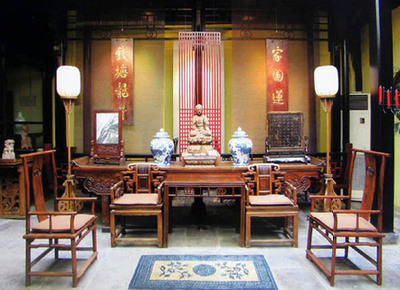
Material and style
The source of timber largely decides the quality of the furniture. Ming and Qing classical Chinese furniture is no exception. The imported tropical hardwood, mostly from southeast Asia, was the most choice wood for Ming and Qing furniture. Zheng He, a renowned Ming official, started his first maritime expedition in 1405 under the patronage of the emperor. During the subsequent 28 years, he and his fleet had six more trade journeys, reaching 37 countries around the world. A large number of tropical hardwoods, timber with great hardness and density, were taken back to China. Craftsmen in the Ming Dynasty used these valuable hardwoods like sandalwood and rosewood to make furniture for the royal family.
Timber can be roughly classified into four color-categories in descending order of hardness and value: black, yellow, red, and white. Black stands for red sandalwood; yellow for yellow rosewood; red for blackwood, and white for other ordinary timber.
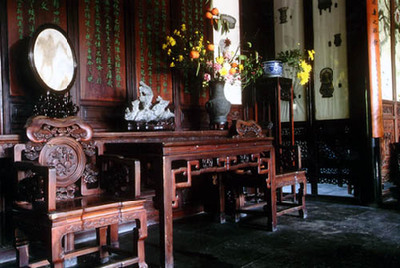
Judging by hardness and density, hardwoods rank among the top. Sandalwood, rosewood, and blackwood are all considered the best hardwoods. The choicest hardwoods are mainly distributed in southeast Asia as well as in South China. They're rare and expensive, even reputed as "Golden Trees," because they usually takes up to hundreds of years to mature.
Red sandalwood, the rarest timber
The purplish-black red sandalwood is hard, heavy, and sinks easily in water. The Chinese have long considered it the most rare timber in the world because it only grows several centimeters in a hundred years. A Chinese table made of red sandalwood in the 18th century was auctioned off for the astronomical price of more than $35 million USD in 1994 at the New York-based Sotheby's auction house. Even today, it remains a symbol of wealth for most Chinese to have a suite of red sandalwood furniture.
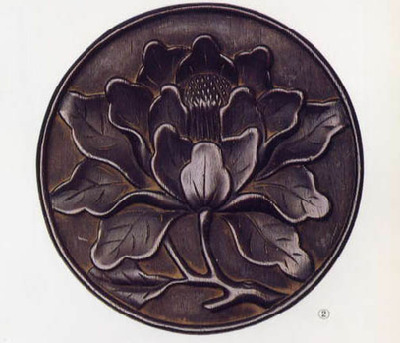
Red sandalwood furniture does not need to be lacquered. It looks silky only when waxed, allowing the grain to stand out and the natural beauty of the wood to be the main focus of the piece. Impervious to insects, and acids, red sandalwood furniture as well as handicrafts can be kept in good condition for a thousand years. More than its decorative and practical functions, red sandalwood is also medically significant. Viewed as a precious traditional Chinese medicine, it can be made into chairs or sofas with medical benefits.
Comfort and simplicity of Ming furniture
An important style feature of the Ming furniture is its elegance and simplicity. Simple lines and minimal decoration serve as a foil to the natural beauty of the wood. However, this meaningful simplicity was achieved without compromising comfort.
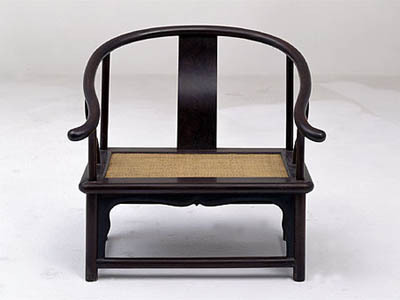
The pursuit of comfort was reflected in such details as curves, lines, height, and size. The height of chairs and benches ranged from 40 centimeters to 50 centimeters, suitable for the legs to drop comfortably. Superb joinery skills were especially reflected at the joints, where only mortise and tenon, instead of nails, were used. The connected parts of furniture were exclusively tightened with glue made from the swimming bladders of sea fish. This type of natural glue, which was sophisticatedly processed, differed from its chemical counterparts and was health friendly. The extremely sticky natural glue and remarkable mortise and tenon joints together ensured the fixedness of the Ming furniture that has lasted for long.
Grandeur and gaudiness of the Qing furniture
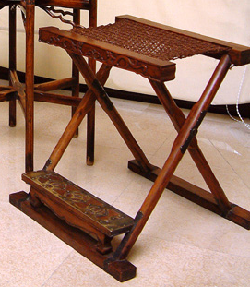
Furniture produced during the early Qing Dynasty followed Ming styles and continued to display simple lines. However a change in style gradually appeared in the early 18th century, and Qing furniture showed its uniqueness in larger sizes and overly ornate carvings.
Furniture became more elaborate. Straight lines, simple designs gave way to elaborately carved decorations. But it was by no means garish. Engraving and color painting were popular and important means of decorating furniture. The backrest, arms, and legs of chairs were often carved with different patterns. A refined screen panel might have taken ten skillful craftsmen up to several months to complete.
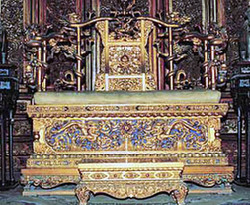
Though superb in craftsmanship, Qing furniture sacrificed comfort, designed merely to please the eye. The Imperial "Dragon Chair" was good evidence of this. With the armchairs and the backrest at right angles, the vast chair looks rigid and uncomfortable. It became a symbol of imperial power when the emperor was sitting high on the chair presiding over a court meeting. At this, it was more of a hierarchical symbol than a practical furniture item.
Decorative motifs
Some auspicious patterns were frequently used to decorate Ming and Qing furniture. Dragons and phoenixes were considered an extremely auspicious decorative design, symbolizing good luck. Bats and happiness are both pronounced fu, therefore bats stand for happiness; the peony represents wealth; the lotus and Lingzhi, a kind of traditional Chinese medicine, are both symbols of good luck; geometric patterns were often carved, typically a swastika, or "Wan Zi" in Chinese. In Sanskrit, the swastika represents well-being and in Buddhism, it stands for prosperity and good fortune.

A wide variety
Ming and Qing furniture has a wide variety of items, mainly including chairs, tables, beds, cabinets, and screen panels.
Chairs
Sitting on the floor was common in China well into the 10th century. In the Ming Dynasty chairs became an increasingly common furniture item. Curving chairs, folding chairs, and the throne are among the best known of Ming and Qing chairs.
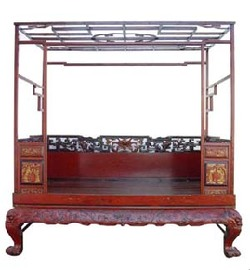
Curving chairs
This chair is not only designed to please the eye, but also to increase comfort. Made to support the elbows as well as the upper arms, the elegant curving arms and backrest are by no means inconvenient.
Folding chairs
This type of chair has a pair of hinged legs that take on an "x" shape when unfolded. Foldable and easy to carry, it was usually taken outside for nobles and aristocrats to rest on when they went on outings and hunting.
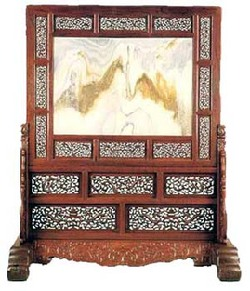
The throne
A stately large chair exuding sense of austerity and authority was a must-have furniture item in the living room of the wealthy and the noble in the Ming and Qing dynasties. The majestic throne in the Hall of Supreme Harmony in the Forbidden City was good evidence of this practice. The regal supremeness permeated all over the hall when the emperors were sitting high on the throne and presiding over routine meetings with officials. In imperial China, the dragon was the most auspicious symbol of all, representing wisdom, strength and goodness, and it was often seen carved in the throne. Therefore, the throne was also called the "Dragon Chair."
Beds
Arhat beds and frame beds were the two most frequently seen types of beds in the Ming and Qing dynasties.
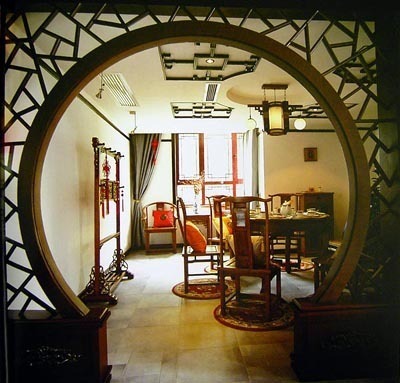
Arhat beds
It looks like a sizable chair. One can sit up or lie down on it. The arhat bed is distinguished by railings around the back and sides of the platform. This practice gradually gave rise to decorative railings attached to the seat frame of the platform.
Arbats are followers of the Buddha who have attained full enlightenment, peace and freedom. It's said that secular men and Buddhists often had enlightening conversations sitting on this type of beds, hence the name "arbat beds."
Frame beds
Raised posts are attached to the surrounding railings of the bed, rendering it as a small secluded "room." This "room" within a room provided nighttime enclosure when it was hung with draperies around the outside of the frame that suited the season. This type of beds denotes people's belief that bedrooms should be relatively dim and enclosed, while living rooms should be large and bright.
Screen panels
The screen panel is among the oldest furniture that has been popular for centuries in ancient China. Originally a practical furniture item used for separating space, the screen panel was later decorated with motifs denoting the social status of the owners. In the Qing Dynasty, the screen panel inlayed or carved with dragons always went together with the emperors' throne, displaying overwhelming imperial might.
Information on collection and purchasing reproductions
Exports of furniture made of yellow rosewood, red sandalwood, ebony, and chicken wing wood, are strictly prohibited, no matter when it was made. Foreigners living in China are allowed to purchase these four kinds of furniture only if they don't take them abroad.
Less than 10,000 pieces of Ming and Qing furniture have been passed down to today. Largely due to its rarity the furniture has witnessed a large price hike over the past few years at auction houses. In the spring of 2006, an embroidered screen panel of the late Qing period was auctioned off in Macau at RMB 85,330,000 (more than $10 million USD), setting a record auction price for Chinese classical furniture.
Although genuine Ming and Qing furniture might not be affordable, people can go to antique furniture markets to buy reproductions. There are dozens of antique furniture markets in Beijing, and Gaobeidian Market, Panjiayuan Market, Lvjiaying Market, and Zhaojiachaowai Market are ranked among the best.





